I’ve been on backpacking trips where unexpected allergic reactions occurred miles away from rescue or transportation. I’ve had a personal near-miss where I lost consciousness and tumbled 25 yards down a hill before coming to rest (luckily safely) on the banks of a rolling river. And that’s why I want to share my thoughts on how to prepare for hiking.
As a former Wilderness First Aid instructor and lifeguard, I’ve heard this saying often: “It’s not a matter of if [an emergency occurs], but just a matter of when.”
In my younger days, thinking about how to prepare for hiking wasn’t as important to me as it is today. But I’ve learned from experience that you can never be too prepared.
Article Overview
How To Prepare For Hiking
These ten tips are designed to help you prepare, physically and mentally, for your next hike.
Hiking Tip #1: Stay Calm
Your brain is your most important tool when things go wrong in the wilderness. If you allow it to be overcome with stress hormones, your ability to think critically will be compromised and you can go into an undesirable “fight or flight” mode that leads to ill-advised decisions.
Consider this anecdote, which I’ll paraphrase, from one of my favorite books on wilderness survival, Deep Survival:
Hiker goes out for a casual day hike on a new trail. Hiker getss wrapped up in the beauty and splendor of nature, losing track of time and bearing. As the sun dips lower, the hiker realizes he/she is lost. Hiker panics and attempts to scramble up a nearby ridge to get his/her bearings. As a result, the hiker burns valuable energy and moves further into a region that he/she is unfamiliar with.
Back at home, the hiker’s family begins to worry and decides to call Search and Rescue. They alert them to the general area the hiker said he/she would be. But by the time Search and Rescue starts their search, the hiker has moved out of that region and decreased his/her chances of being rescued.
Staying calm, and staying put, when things go wrong was one of my key takeaways from Deep Survival. Panic often compounds the issue and leads to choices that, in hindsight, rarely seem rational or intuitive. By keeping our minds calm, we can listen to what our bodies need and, in most cases, increase our odds of overcoming the challenge that lies before us.
Hiking Tip #2: Assess Your Surroundings
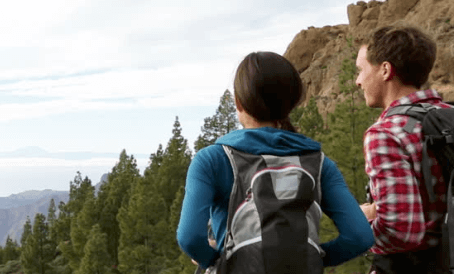
Being able to fashion useful tools, splints, and other instruments from items that you’d typically find in a wilderness setting is a critical component to wilderness survival. Simple examples include using a solid tree branch to splint a broken arm or harvesting dried pine needles for a fire starter.
Assessing your surroundings is a practice you can refine in every moment on the trail. If you do so, you’ll be much more prepared when things go wrong. When you recognize you’re lost, for example, recalling that stream you passed a mile earlier gives you a landmark to shoot for, and a practical place access to water if you have to spend an unexpected night in the woods.
In addition, assessing your surroundings as you hike builds a mental catalog of bread crumbs you can follow back home. Recalling a familiar V-shaped tree or heart-shaped boulder will help you re-calibrate your location and set a more accurate bearing to follow back to your starting location.
Hiking Tip #3: Make a Plan
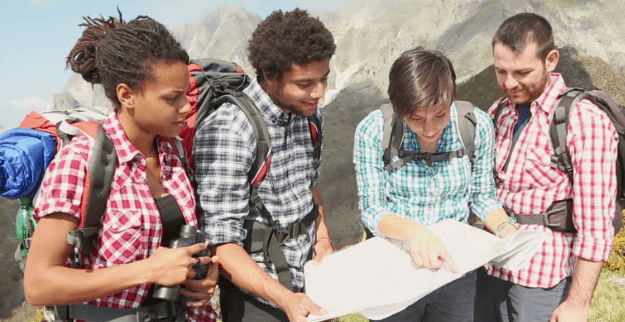
Many hikers make the mistake of taking action before a good plan has been made. I’ve been there, done that, and I’m just happy I’m here to tell you about it.
My friends and I once got lost on a hike into the American River Gorge from near Donner Summit. We were young, foolish, and made the inexcusable mistake of trying to “cut off” a few switchbacks after a long day of hiking, cliff jumping, swimming, and beer drinking.
Once we realized we were too far off-trail for our own good, we compounded the situation by pushing on, hell-bent on finding a “lookout point” that would help us get our bearings. If we had stopped to think for a second, we would (hopefully) have realized we were in a massive ravine close to the American River’s headwaters.
From our location, everything went up and the foliage was dense. The likelihood of finding that “high point” was very low. Now, on this occasion we got lucky and found a small rock outcropping just above the developed trail. But not until we had expended unnecessary energy scrambling under, around, and through prickly Manzanita after prickly Manzanita.
Stopping and making a plan when things go wrong increases your odds of taking positive, inspired action that improves your situation. Take it from me: Action for the simple sake of action, especially when things go wrong, is a good recipe for compounding an already precarious situation.
Hiking Tip #4: Call for Help
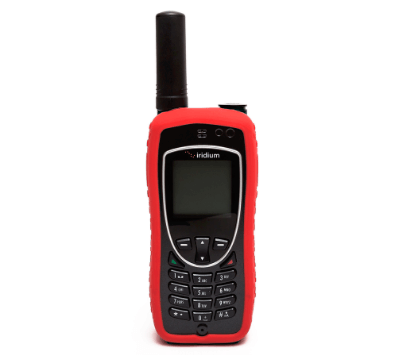
We’re sometimes conditioned to feel like asking for help shows weakness. Asking for help can be hard, but when it’s the difference between rescue and the bleak alternative, it’s should be an easy decision.
Carrying a radio, cell phone, satellite phone, GPS unit, or distress beacon is especially recommended for those that like to spend multiple days in the wilderness at a time.
When things go wrong, you’ll want a way to communicate with the outside world. Consider investing in a personal locator beacon or a GPS unit with messaging functionality. Yes, they require an up-front investment, but can you really argue about the price tag when it has the potential to save your life?
Tip #5: Attend to Your Basic Needs
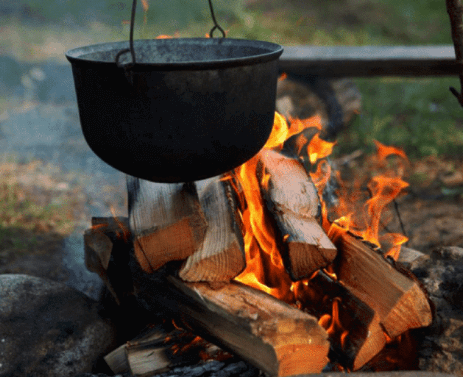
When lost in the woods, there’s a tendency to turn our attention to what we think needs to happen to get us home. We could talk about how the woods was our home for centuries, but that’s not today’s focus.
Whether you’re injured or you’ve lost your bearings, we often think that the best way to remedy our situation is to get back to the trailhead. But putting our focus on getting back to the trailhead is not always the best use of our minds.
Going back to our earlier story from Deep Survival, our aforementioned hiker has gotten more lost and significantly decreased his chances of rescue and, therefore, survival. Remember?
If our hiker had remained in near the location of their “Uh oh, I’m lost” realization, they would’ve been closer to where Search and Rescue began their search. In all likelihood, it wouldn’t have taken much more than a strong signal fire for our hiker to be found within 24 hours.
In the book, the author tells the story of a small child that gets lost in the woods. Instead of exerting valuable energy to “get home” or “find a viewpoint,” the child pays attention to his basic needs. When he feels hungry, he finds something in his backpack to snack on.
When he gets cold, he finds a protected root system to curl up in. In his case, our child is rescued within 24 hours because he paid attention to his body’s basic needs. On the other hand, ignoring those needs can lead to fatigue, delirium, and other complications that ultimately decrease your odds of survival.
Hiking Tip #6: Do No Harm

Piggybacking off the previous point, it’s important to realize that things are already in a less than desirable state. The aforementioned steps will help you avoid this, but it’s worth mentioning that any action you take when things go wrong should improve your situation.
In lifeguarding, assessing the situation before making the decision to undertake a rescue is the first learning point. Consider a fast-moving river that’s approaching flood status. Now consider a trained lifeguard witnessing a dog or person fall into this rushing river.
Although our lifeguard knows a variety of rescue techniques, he may not have the necessary equipment on-hand to perform a safe rescue. He also may not feel safe trying to swim through such a river to reach the subject of this rescue. It may sound cold, but one victim is always better than two.
Ultimately, we need to avoid actions that compound our situation. In the scenario above, we can easily see how our rescuer attempting to dive into the rushing river without the proper equipment could result in a second victim for other rescuers to attend to.
Hiking Tip #7: Navigate Effectively
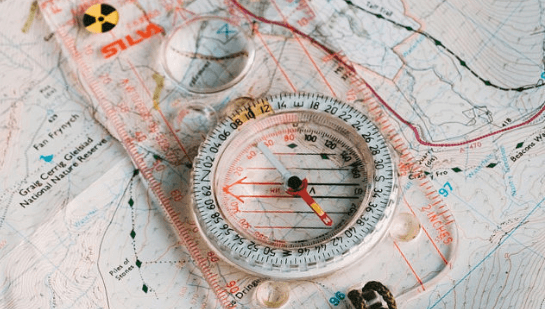
Navigating effectively makes a huge difference when things go wrong in the wilderness. Whether you’re lost on a solo hike or evacuating a member of your hiking group, every moment of ineffective navigation can worsen your predicament.
I don’t go hiking without a physical map of the area I’ll be hiking in. I know the benefits of modern GPS units, but call me old-school. I love a navigation strategy that doesn’t rely on batteries or the strength of a satellite signal. Of course, if you’re going to rely on a map and compass to navigate in the wilderness, you better know how to do so properly (i.e. take a course!).
Hiking Tip #8: Know Before You Go
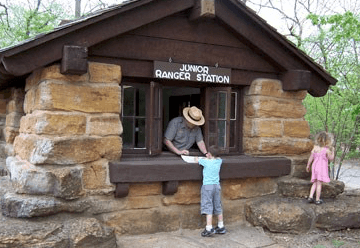
A lot of hikers make the mistake of not thoroughly researching a hike before they actually put their boots on the ground. Think about the terrain, possible hazards, weather, and what your emergency evacuation plan will be in the worst-case scenario.
Gain as much knowledge about the area you’re going to hike in before you actually go there. Do research before you head out for a day hike or multi-day excursion. There are so many online resources, such as All Trails, that help us plan and prepare for hiking adventures.
Personally, I love stopping into local ranger stations to inquire about wilderness area restrictions, recent animal activity, fire restrictions currently in effect, and any other knowledge the rangers at the station are willing to provide.
There’s no substitute for hearing it firsthand from the people that have spent their lives trekking in, around, over, and through their wilderness regions.
Hiking Tip #9: Stock Your First Aid Kit
The quickest way for things to go from bad to worse if a member of your party is injured in the backcountry is to realize that your first aid kit is either out-of-date or empty.
Checking your first aid kit and restocking any items that are low or missing should be part of your pre-hike checklist before every trip, especially if you’re planning on spending multiple days in a remote region. If you’re curious about what exactly should be in your first aid kit, check out my First Aid Kit List.
Hiking Tip #10: Invest in Training
If you’re serious about taking bigger, longer, and more challenging hiking trips, I highly suggest you invest in training that will make you feel more prepared and empowered to take meaningful actions when things go wrong in the wilderness.
For starters, the American Red Cross offers Wilderness First Aid courses all over the country that will teach you “advanced skills to be used in emergencies when help from professional first responders may be far away.”
As you gain hiking experience and you want to continue your education, NOLS is an excellent organization to research. They offer a variety of wilderness medicine courses, expeditions, risk mitigation services, and custom education programs. They truly are “The Leader in Wilderness Education.”
Do You Have Other Tips For How to Prepare for Hiking?
I’d love to know if these tips are new to you and, if so, what you think about putting them into practice to prepare for your next backpacking or hiking trip. If this article brought up any questions, I’d love to hear them!
Feel free to reach out to me directly (email below), or share your adventure by tagging @thebackpackguide on Instagram!
About The Backpack Guide
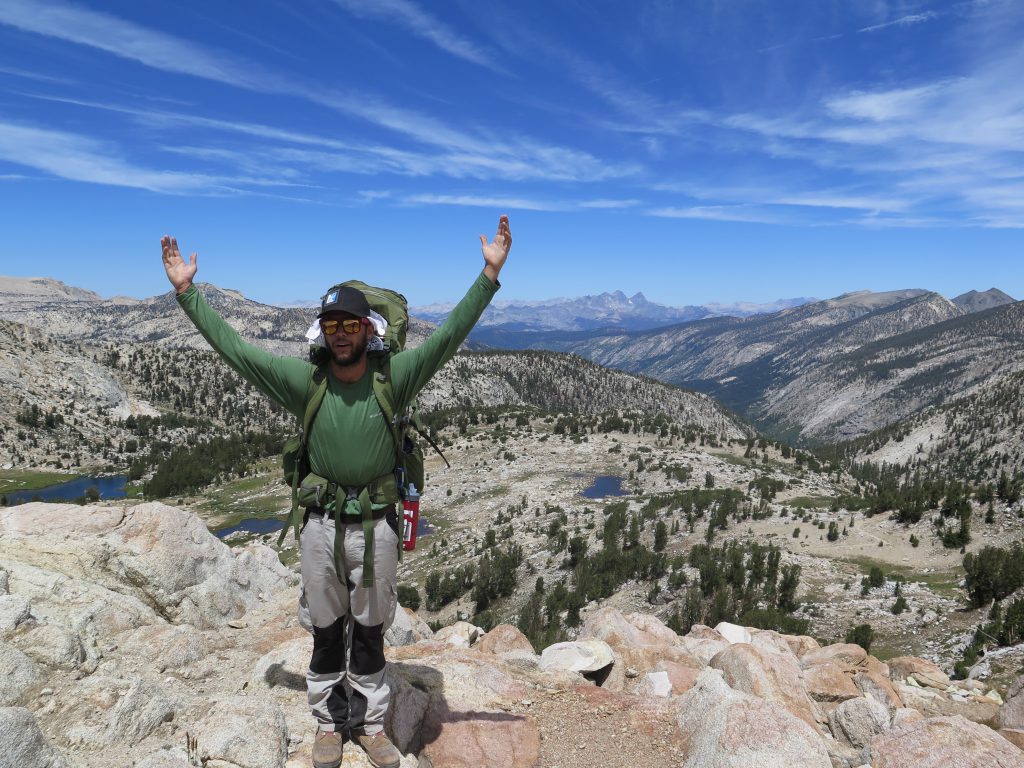
I hope you’ve enjoyed these tips on how to prepare for hiking and I’d love to hear your feedback in the comments section below. I’ll be quick to reply to any questions, comments, or concerns you feel like sharing!
Furthermore, I do receive a commission for products purchased using the links on this site. Everything that I earn through this site helps me continue to create more helpful resources, which will one day include guided backpacking trips focused on education, connection, and empowerment.
Side note: Be sure to investigate the articles in my Hiking Tips and Trails section. Also, check out my Outdoor Gear page for reviews on water filters, tents, hiking shoes, trekking poles, and more. Lastly, check out my Backpack Reviews, including brands like Kelty, REI, and Gregory, if you’re in need of a new pack!
“May your trails be crooked, winding, lonesome, dangerous, leading to the most amazing view. May your mountains rise into and above the clouds.”
– Edward Abbey
The Backpack Guide
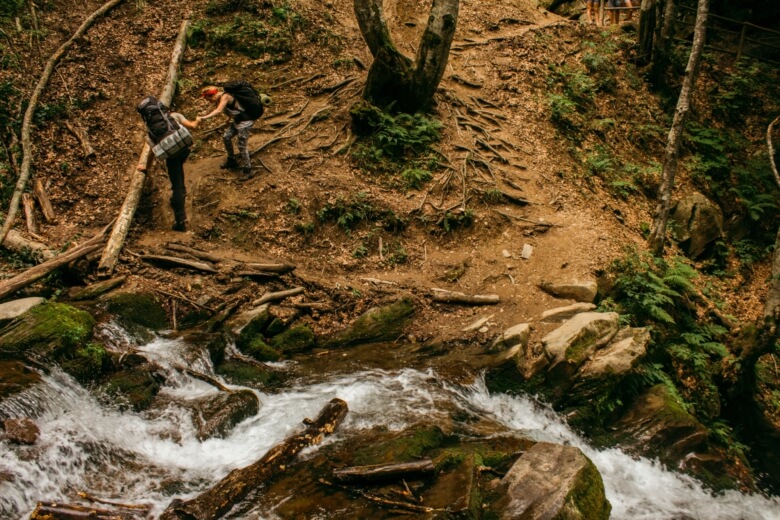
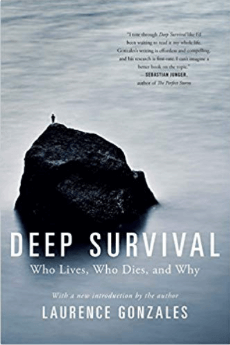
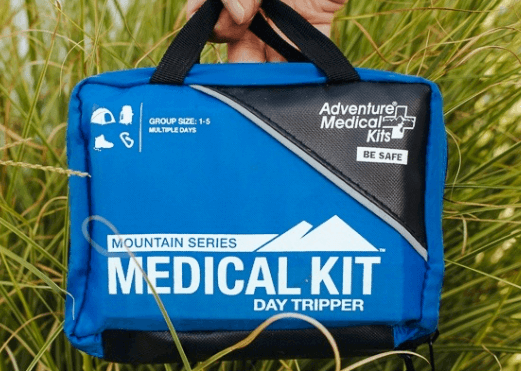

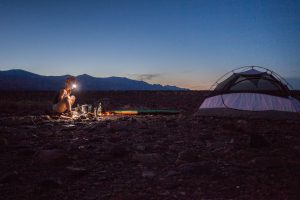
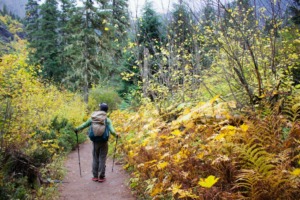
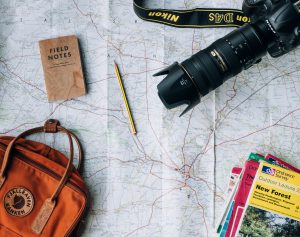
Comments
My friends and I are thinking about going on a hiking trip this spring. I am however not the type of person that does anything outdoors. Yet they have convinced me to attend this trip. I started to research how the hiking world works because I’m not familiar with it. I also want to know the basics before I go on such a trip. Because if anything goes left I want to be able to remain calm and helps the others. What really grabbed my attention was your #8 to know before you go. This is a very good point that I did not think about. We have decided to go hiking in Boone, NC. We are not familiar with the area and this just does not seem like a smart move to me. Thank you so much for your insight and for this well written article.
Author
I’m excited to hear that you’re heading out this spring. There are so many resources available to help you and your group learn more about the area before you head out. When I mentioned to Know Before You Go, I really meant that you should do as much research as you can. But we can never really learn 100% about an area until we set foot there. I’d start by looking up the nearest ranger station to where you’ll be hiking and make a point to stop in there on the way to the trailhead!
Thank you for a wonderful article. Informative, educative and exhaustive with great expository skill about !
The article highly appreciated if you could help me with where I can learn hiking? Our minds at such points or situations will unlikely do any of those tips due to fear of unknown.
your knowledge of the subject is awesome. How long have you been in hiking?
i love hiking but no time to learn
Author
I have been hiking for the better part of two decades now. My parents started us young and I got into backpacking when I was in high school. Growing up in the mountains made wilderness and the outdoors very accessible. There’s really not much to learning how to hike! Maybe I’ll write a post about it soon!
This list about hiking and what to do when things go wrong, should be a mandatory read for anyone who is about to go on a hike. Some of the tips that were mentioned I am familiar with but somethings that are actually so simple and basic I never really considered, Like packing a first aid kit, and that is probably something that should be a priority. I do go on day hikes but I have never really studied the area where I was going, however I can now see that I should. You never expect anything to happen to you but it can be something just as simple as twisting your ankle.
Thank you this very informative article about things to do before hiking.
Author
Thanks for the comment Alexandra! I’ve spent years hiking around the mountains surrounding my hometown and still learn new things every time I go out. It’s amazing what a humbling teacher Mother Nature can be!
I love hiking but what I have seen in this blog got me thinking whether I really do all that before I start on my hiking trip that how I have realized that actually, I know very little about hiking and how being prepared. what this article taught is I should go back to drawing board again and start following all those steps you have provided so that next time I am going on hiking I should be ready and well prepared
Author
It has taken me a long time to learn as much about hiking as I now know, and we’re always learning more. I’ll admit that I’m guilty of not checking off every one of these items before I go out for every hike. But that’s why I started with the mental aspect of how to react when things go wrong. That’s the most important step, and will put you in a better position to succeed, even if you have neglected some of the other tips!
This is a great website as I was brought up around the woods and was taught many survival tips but not all of what you have suggested. Like carrying a radio and a first aid kit…those were never in our camping trips, and it seems like common sense now that I read it here.
I have a great respect for wildlife and the wilderness as I do for the ocean.
Many people say they love camping but don’t really know how they will react when they are in distress so it is good to try and stay calm in hectic situations.
Author
Your comment touches on what I believe to be the most important tip in the article. And that practice of staying calm when things don’t go as planned can be taken into all aspects of life and applied far beyond the beautiful wildernesses and stunning oceans that we love so dearly!
Tucker,
your trips and tails information is gold! especially this post: When Things Go Wrong: 10 Tips for Hiking Preparedness.
I am not a hiker because of my unfounded fear of ‘getting lost’ as you have written here.
I have always wanted to hike our beautiful New Zealand natural parks (especially, hike the Fiordlands) and have added it to my bucket list. However, it is that one fear, that keeps me from ever trying, even when I have friends willing to go with me. I make some excuse for why I cannot join them.
After much research and seeing the many envious social media posts of my friends climbing Mount Kilimanjaro, I have decided that it might be too late by the time I make that step.
I have been trying to find something online that will give me enough information to why I can and should.
Your article has given me great insight into how I can be well prepared, should my fear become a reality (God forbid). I definitely like that ACR ResQLink+, which I believe will be a useful tool to have, in just about any dangerous situation (like a normal trail where I fall over and hurt myself).
Your 10 steps are actually the sort of thing I wanted. I could easily tick off what I am good at, for example:
1. Staying calm – yes I am okay at this being somewhat of an introvert
2. Assess Your Surroundings – I can learn how to do this, using your info
3. Make a plan – yes I am quite good at that too
4. Call for help – Definitely good at this
5. Attend to my basic needs – needs further development
6. Do no harm – I will consider it and try to act on it when the time comes
7. Navigate Effectively – Hmmm, I will look at your modern GPS units.
8. Know Before you go – I am great at research, so no worries
9. Stock your first aid kit – I have to admit that this is one I am not good at and probably need to check if there is one at all.
10. Invest in training – I guess I will have to look for one in New Zealand
So all in all, your post: When Things Go Wrong: 10 Tips for Hiking Preparedness, is like a checklist for me to measure myself against. My rate of 6 definites out of 10, is a confirmation that I can overcome my fear of ‘getting lost’.
I feel that you have given me a peace of mind, and the fact that you are a former Wilderness First Aid instructor and certified waterfront lifeguard gives you more authority to what you have written is an added bonus.
A piece of very enjoyable yet helpful information for any hiking beginner, just like me. Thank you.
Author
I’ve heard so many amazing things about the national parks in New Zealand. Two of my high school mates spent six months over there living in a van recently and their photos were incredible! I’m glad you liked the article and have adapted it to your own personal checklist. I wish you the best of hiking journeys to come!
Thanks for the response Tucker,
The irony of my life, is that is what I want to do – just take the risk and go enjoy the beauty that I am in, which people all over the world pay to come an enjoy 🙂
…you don’t know how valuable your site is to me right now 🙂 have a great day.
Author
I’m very happy that you’ve found value on my site. If there are any hiking topics or gear reviews that you’re interested that you can’t find here, please let me know and I’ll add it to my list of content to create!